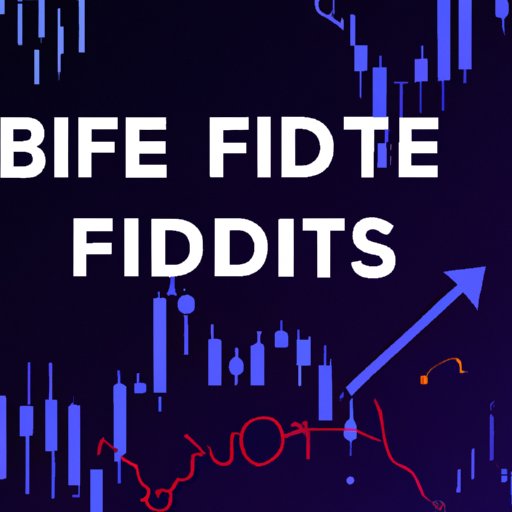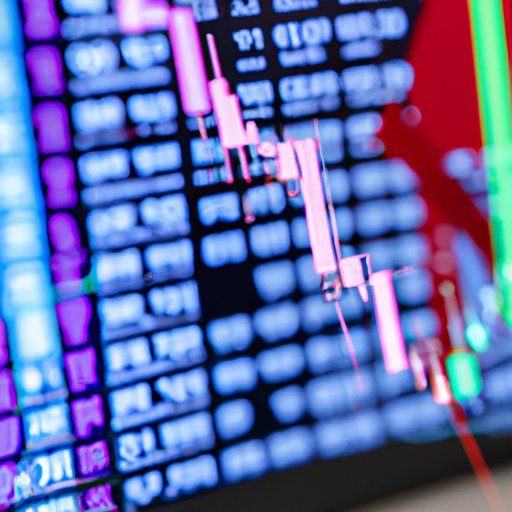Introduction
Cryptocurrency futures are a type of derivatives contract that allows traders to speculate on the future price of cryptocurrencies. They provide an additional layer of liquidity to the crypto market and can be used by both investors and traders to hedge their positions and take advantage of price movements. In this article, we will explore how crypto futures work and their various benefits.

Explaining Futures Contracts in the Crypto Market
A futures contract is an agreement between two parties to buy or sell an asset at a predetermined price on a specific date in the future. The asset can be anything from commodities such as oil, gold and silver to stocks, indices, and even cryptocurrencies. In the case of crypto futures, the asset being traded is a cryptocurrency such as Bitcoin or Ethereum.
There are two types of crypto futures contracts: cash-settled and physically-settled. Cash-settled futures contracts are settled in cash, while physically-settled futures contracts are settled with the underlying asset. The most common type of crypto futures contract is the cash-settled futures contract, which is usually offered by major cryptocurrency exchanges such as Binance, BitMEX and OKEx.
The advantages of trading crypto futures include the ability to trade on margin, access to higher levels of liquidity, and the ability to go long or short without owning the underlying asset. The disadvantages of crypto futures include the potential for large losses due to high leverage, the need to pay fees to the exchange, and the risk of slippage due to low liquidity.

A Guide to Trading Futures in Crypto
To start trading crypto futures, you first need to choose a crypto futures exchange. Major exchanges such as Binance, BitMEX and OKEx offer a wide range of crypto futures products. Once you have chosen an exchange, you will need to set up a crypto futures account.
Setting up a crypto futures account is relatively straightforward. You will need to provide some personal information such as your name, address and email address. You will also need to upload documents such as a government-issued ID or passport and proof of address. Once your account has been approved, you can begin trading crypto futures.
When trading crypto futures, it is important to understand the different strategies available. These include scalping, hedging, arbitrage, trend following and mean reversion. Each strategy has its own advantages and disadvantages, so it is important to understand them before trading.
Understanding Leverage and Margin Trading in Crypto Futures
Leverage and margin trading are two of the most popular features of crypto futures. Leverage allows traders to increase their exposure to the market without having to put up the full amount of money required to open a position. This means that a trader can control a larger position than what they would normally be able to with just their own capital.
Margin trading involves borrowing funds from the exchange to open a position. The amount of margin required varies depending on the exchange and the type of futures contract being traded. Traders must be aware of the risks associated with margin trading, including the potential for liquidation if the position moves against them.
In order to calculate the margin requirement, traders need to know the leverage ratio and the total value of the position. The leverage ratio is the amount of leverage offered by the exchange and can range from 1x to 100x. The total value of the position is the sum of the entry price, stop loss, take profit, and any fees.
The advantages of using leverage and margin trading include the ability to increase profits and reduce losses. However, these features also come with risks, such as the potential for large losses due to high leverage and the need to maintain sufficient margin to avoid liquidation.
Overview of Crypto Derivatives and Futures Markets
Crypto derivatives and futures markets are two distinct markets. While crypto derivatives are financial instruments based on the underlying asset of a cryptocurrency, crypto futures are contracts that allow traders to speculate on the future price of a cryptocurrency. Therefore, although both markets involve the buying and selling of crypto assets, they differ in terms of their structure and purpose.
The factors that affect the price of crypto futures include macroeconomic conditions, geopolitical events, and news about the underlying asset. Additionally, the regulatory environment of crypto futures is still evolving, and new regulations could have a significant impact on the market.
Risk Management Strategies for Crypto Futures Trading
Risk management is an essential part of trading crypto futures. To manage risk effectively, traders should develop a trading plan, identify their risk levels, and use hedging strategies such as stop losses and take profits. Additionally, traders should use technical analysis and fundamental analysis to gain insight into the market and make informed decisions.

Analyzing Volatility and Price Movements in Crypto Futures
Volatility is one of the most important factors to consider when trading crypto futures. It is important to understand how volatility affects the price of a crypto asset and to use tools such as moving averages and Bollinger bands to analyze price movements. Additionally, traders should be aware of news and events that could potentially cause price movements in the market.
Price movements can also be analyzed using charting tools such as candlestick charts and line graphs. By understanding the patterns and trends in the market, traders can gain insight into the direction of the market and make informed decisions.
Conclusion
Crypto futures are a type of derivatives contract that allows traders to speculate on the future price of cryptocurrencies. They provide an additional layer of liquidity to the crypto market and can be used by both investors and traders to hedge their positions and take advantage of price movements. This article has explored how crypto futures work, the different strategies available, leverage and margin trading, and risk management strategies. Additionally, it has discussed the factors affecting the price of crypto futures and how to analyze volatility and price movements.
(Note: Is this article not meeting your expectations? Do you have knowledge or insights to share? Unlock new opportunities and expand your reach by joining our authors team. Click Registration to join us and share your expertise with our readers.)
